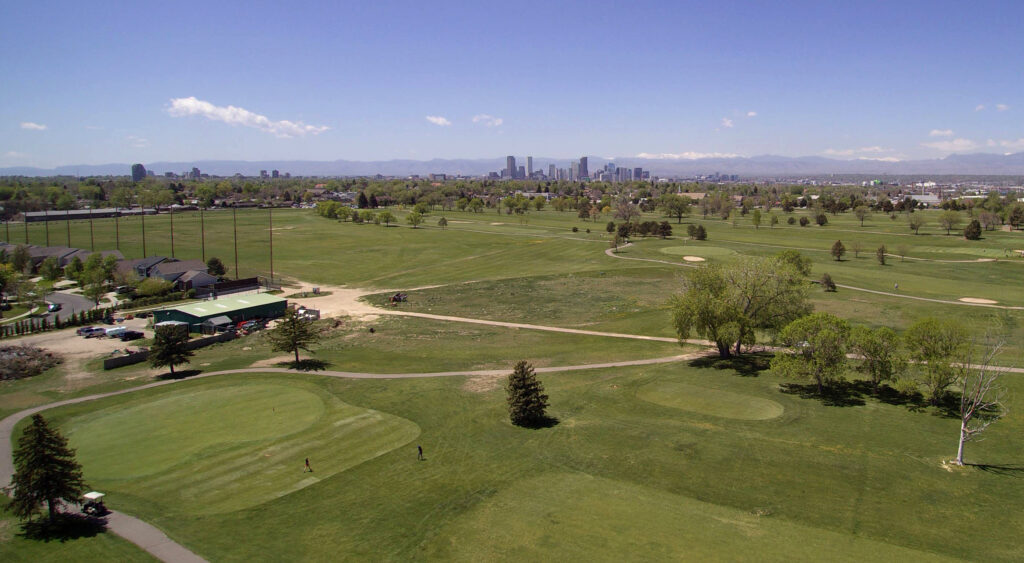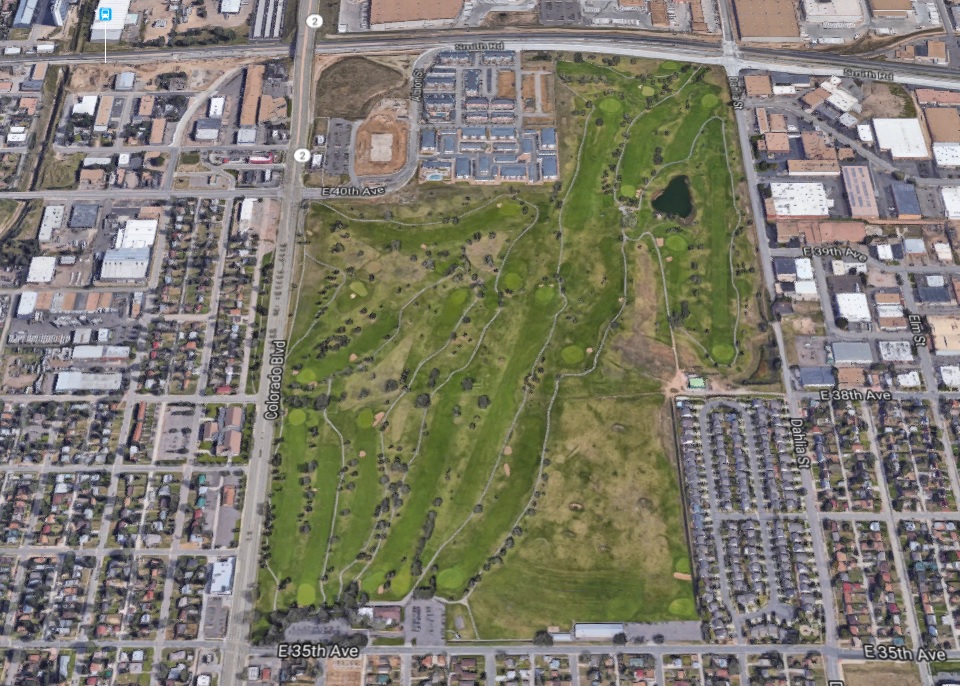
Denver Audubon's Vision of Parkhill Golf Course
Photo Credit: Hyoung Chang, The Denver Post
Denver Audubon’s vision for Park Hill Golf Course advocates for retaining at least 90% of the Park Hill Golf Course as open space, using native plants for any necessary revegetation. Human benefits include:
- Preserving the conservation easement will provide walkable access for Northeast Park Hill, an underserved community in High Need of walkable access to a park.
- City parks advance urban policy objectives, such as job preparation for youths and adults, stronger neighborhoods. Research has shown that parks help child development, residents’ physical and mental health.
- Improving the overall quality of Denver’s urban tree canopy reduces the heat island effect, traps and removes carbon dioxide from the atmosphere, and cleanses air-borne pollutants from the air we breathe.

Denver Audubon supports the preservation of the conservation easement of the Park Hill Golf Course consistent with the Guiding Principles of the City’s 20 year Game Plan for a Healthy City. Denver Audubon sees the value in adding BIPOC owned local businesses and affordable housing that advance the public’s use and enjoyment of the park to the perimeter, which should not require more than 10% of the remaining 130 acres.
The City purchased 25 acres for construction of a storm water detention basin, a component of its Platte to Park Hill flood control project. Conservation of the remaining 130 acres would significantly advance the following important social and environmental objectives:
First, Northeast Park Hill is known to the City to be an underserved community in High Need of walkable access to a park. Increasing the 91 acres now available to the surrounding communities by the entire 130 acres available here would still only bring these communities up to just over one-third of the acreage available to the communities of Berkeley, Gateway-Green Valley Ranch and Washington Park. Denver formerly had one of the highest ratios of open space per resident – we were a leader in that field! Now, however, Denver ranks 12th out of 15 of the nation’s largest cities with only 170 sq. ft. per person, compared to 1,023 sq. ft./person in #1, Atlanta.
Second, the Denver region is a part of a principal route of the Central Migration Flyway used by millions of migrating birds in spring and fall. A multi-agency study discovered that North America has lost over 25% of its birds, some 3 billion, over the past 50 years. The widespread loss and degradation of habitat is the biggest driver of bird population declines. Audubon considers 113 species using this Flyway to be highly vulnerable to changes from human activity and climate changes here. Preserving large intact areas of habitat is crucial to the survival of North American bird species. Our failure will bring on Silent Spring, merely by a different means.
Habitat size matters to migrating bird species for a number of reasons. Species that can only migrate over restricted corridors cannot afford to lose opportunities to stop, rest and refuel when they pass over Denver. Loss of this stop-over habitat, caused by humans and by climate change, constitutes a serious threat to species survival. These types of species tend to have fewer individuals and tend to be less abundant than species that can make use of a wider variety of habitats over wider corridors, which further increases the risk of extinction for those species. Also, as habitat size increases, habitat health increases, as damage occurring along habitat edges, caused by interface with human activity, decreases relative to total habitat size.
Increasing bird diversity has shown to increase human life-satisfaction and happiness in residents, as seen in this study. “The happiest Europeans are those who can experience numerous different bird species in their daily life, or who live in near-natural surroundings that are home to many species,” said the study’s lead author, Joel Methorst.
Third, the value to Denver’s residents of preserving a single, large block of open space has important and different benefits from any commercial advantage to be enjoyed from development. As The Urban Institute concluded many years ago, city parks advance important urban policy objectives, such as job preparation for youths and adults and stronger neighborhoods. Parks, their research showed, can advance the community’s objectives to help children develop physically, intellectually, psychologically and socially. The COVID-19 pandemic has clearly demonstrated the importance of natural areas close to home for residents’ physical and mental health.
Finally, transformation and reforestation of the golf course supports the City’s ongoing efforts to restore the urban canopy. The Office of the Denver City Forester is charged with responsibility for improving the overall quality of Denver’s urban tree canopy to add shade which reduces the heat island effect of streets, parking lots and buildings, traps and removes carbon dioxide from the atmosphere, and cleanses air-borne pollutants from the air we breathe.
Denver’s canopy presently shades about 19% of the city, which the City Forrester calculates to provide some $122M in benefits to all Denver’s residents. Presently, the golf course has some 440 trees providing a canopy shading approximately 7% of the acreage. Undivided preservation and reforestation of this site presents a substantial opportunity to add shaded land to counter record heat that the entire City experiences. Each tree-shaded acre will weaken the heat-trapping greenhouse effect at the source: removing 80 to 200 pounds of combined air pollutants, removing more than a ton of carbon and storing an additional 40 tons of carbon per acre, annually.
All these factors strongly suggest that at least 90% of the Park Hill Golf Course should be retained as open space, as natural as possible, using native plants for any necessary revegetation. Well-planned development around the area’s periphery can create opportunities for “buy-in” by adjacent neighborhoods that would support a sense of stewardship and conserve area resources.
